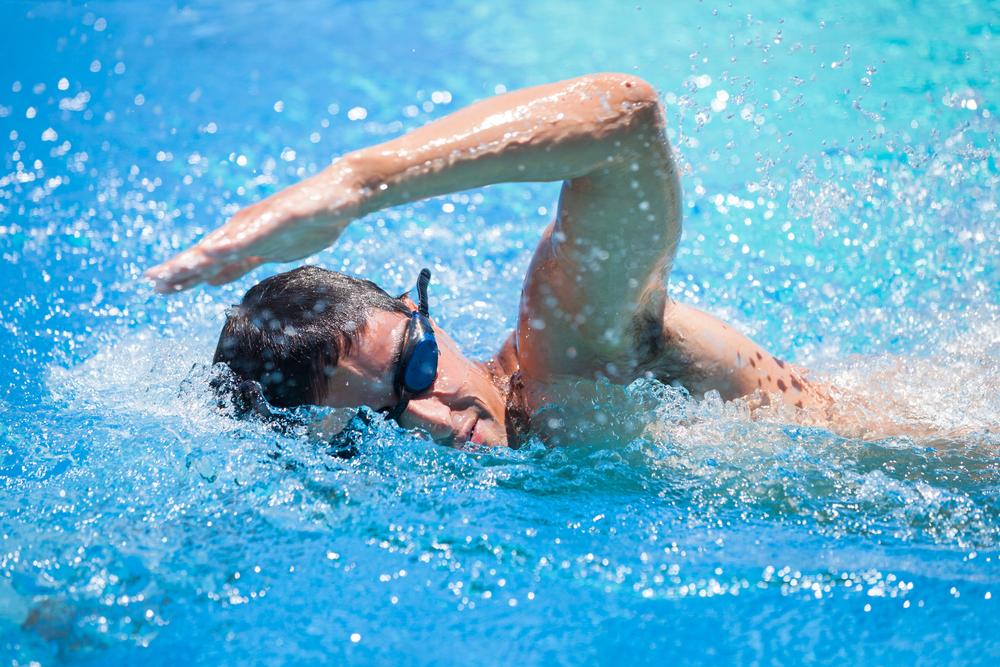5 Diseases That Can Attack You in a Swimming Pool
Before hurrying into the pool, it's good to pause to listen to this article. Swimming which should be a recreational activity on the weekend turns out to hide a number of health risks. There are several dangerous diseases in the pool that lurk every visitor

Most public swimming pools have indeed been sterilized with chlorine to kill pathogenic bacteria scattered in the pool water. But that does not mean that the public swimming pool water is fully guaranteed. The disinfectant effect of chlorine can take a long time and is not able to kill all types of bacteria in the pool. So, what are the diseases in the pool that you have to watch out for?
Risk of disease transmission in the pool
1. Diarrhea
Diarrhea after swimming is caused by various bacteria that can be found in swimming pool water. Call it Shigella, Cryptosporidium, Norovirus, E. coli, and Giardia intestinalis. Some of these parasites are found in human feces, so they can spread when you accidentally swallow pool water contaminated with feces.
In fact, even though you may be the type of person who is diligent in bathing, the average person has about 0.14 grams of dirt that still sticks to his butt, which when rinsed with water when swimming can contaminate the pool water. What's more if there are swimmers who are diarrhea while swimming. Human waste contains millions of germs. If the swimmer suffers from diarrhea, he can pollute the water if the "nature call" for defecation in the pool can no longer be endured.
Most infections of diarrhea in public swimming pools are caused by cryptosporidium. That's because cryptosporidium is more resistant to the effects of chlorine than other germs. Chlorine in general can kill bacteria in just a few seconds, but cryptosporidium can live in pool water for days.
2. Muntaber
Muntaber (gastroenteritis) after swimming is generally caused by the same group of bacteria as diarrhea. The way it works is the same. Some of these parasites are found in human feces, so they can spread when you accidentally swallow pool water contaminated with feces.
Muntaber causes inflamed intestines, which then results in a series of symptoms ranging from abdominal pain, stomach cramps, nausea, diarrhea, fever, and vomiting that occur gradually more than 1-2 days after swimming. Symptoms can last up to 5-10 days.
3. Swimmer's ear
The ear that enters the water when swimming has the potential to cause an ear infection called swimmer's ear. Swimmer’s ear is the risk of disease in the pool that occurs due to moisture from the rest of the water and the Pseudomonas aeruginosa bacteria trapped in the ear after swimming.
Germs and bacteria that multiply in your ears can cause swollen ears and redness that feels hot as well as pain, even pus can come out. In extreme cases, this infection can cause fever and pain that spreads on the face, head and neck, to decreased hearing.
4. MRSA
MRSA, short for methicillin-resistant Staphylococcus aureus, is a type of staph bacteria that is resistant to certain antibiotics. Most MRSA infections are skin infections (pimples, boils) that may be considered as spider bites; red, swollen, painful, warm to the touch, and festering; also accompanied by fever.
MRSA does not last long in swimming pool water which has the right pH level (7,2 - 7,8) and has been sterilized with chlorine. There has been no MRSA report that spreads through contact with recreational water. However, MRSA can be distributed in swimming pool water and other facilities through direct and indirect contact with other visitors infected with MRSA.
Transmission of infection can occur immediately if you touch someone else's MRSA infection. Indirect infections can occur when you borrow items (such as towels or razors) or touch the surface of objects (such as handrails or changing room benches) contaminated with MRSA. MRSA is most likely to spread when in contact with a wound or scratch on the skin that is not closed.
5. Hepatitis A
Hepatitis is inflammation of the liver caused by a virus. But while there are many types of hepatitis, there is only one that has the potential to contaminate swimming pool water - hepatitis A.
Hepatitis A is transmitted from one person to another through food, drinks, or water contaminated with feces containing viruses. You can get hepatitis A from swallowing contaminated swimming pool water when someone accidentally defecates in the pool. In addition, the average person has about 0.14 grams of dirt that is still attached to his butt from previous toilet visits, which when rinsed in water when swimming can contribute to polluting the pool water.
About 10 percent of people infected with hepatitis virus are not sure how they can get this disease.
Before swimming, check your swimming pool first
The Centers for Disease Control (CDC) recommends that you always check and check the pool before diving, to ensure the safety of diseases in the pool.
- See the water. Water must look clean, clean and blue - to the bottom. You should be able to see the drain and tile lines at the bottom. Make sure the water is constantly moving to the point of being filtered.
- Kiss the smell. Chlorine should not smell strong. The strong odor of chlorine can indicate the presence of chloramine - which is a chemical consisting of chlorine mixed with body oil, sweat, urine, saliva, lotions, and dirt.
- Touch the water. The walls of the edges in the pond must be smooth, not slippery, or sticky. Water cannot be stuck in your hand.
- Don't swallow water. Teach children and train yourself not to swallow pool water - and even avoid putting your fingers in your mouth.